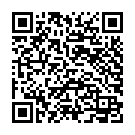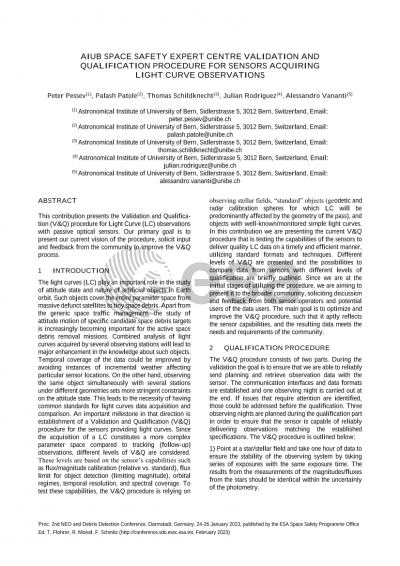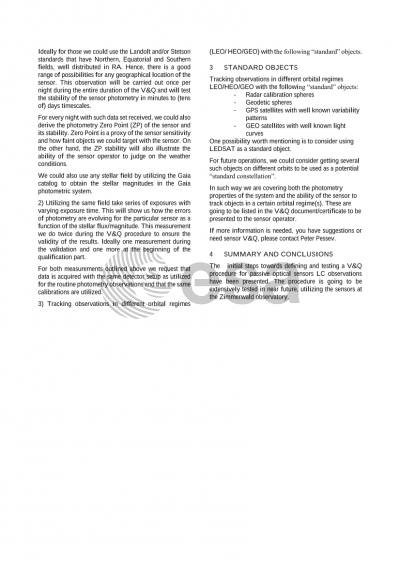Document details

Abstract
Light curves (LC) play an important role in the study of attitude state and nature of artificial objects in Earth orbit. Such objects cover the entire parameter space from massive defunct satellites to tiny space debris. Apart from the generic space traffic management, the study of attitude motion of specific candidate space debris targets is increasingly becoming important for the active space debris removal missions. Combined analysis of light curves acquired by several observing stations will lead to major enhancement in the knowledge about such objects. Temporal coverage of the data could be improved by avoiding instances of incremental weather affecting particular sensor locations. On the other hand, observing the same object simultaneously with several stations under different geometries sets more stringent constraints on the attitude state. This leads to the necessity of having common standards for light curves data acquisition and comparison. An important milestone in that direction is establishment of a Validation and Qualification (V&Q) procedure for the sensors providing light curves. Since the acquisition of a LC constitutes a more complex parameter space compared to tracking (follow-up) observations, different levels of V&Q are considered. These levels are based on the sensor’s capabilities such as flux/magnitude calibration (relative vs. standard), flux limit for object detection (limiting magnitude), orbital regimes, temporal resolution, and spectral coverage. To test these capabilities, the V&Q procedure is relying on observing stellar fields, “standard” objects (geodetic and radar calibration spheres for which LC will be predominantly affected by the geometry of the pass), and objects with well-known/monitored simple light curves. In this contribution we are presenting the current V&Q procedure that is testing the capabilities of the sensors to deliver quality LC data on a timely and efficient manner, utilizing standard formats and techniques. Different levels of V&Q are presented and the possibilities to compare data from sensors with different levels of qualification are briefly outlined. Since we are at the initial stages of utilizing the procedure, we are aiming to present it to the broader community, soliciting discussion and feedback from both sensor operators and potential users of the data users. The main goal is to optimize and improve the V&Q procedure, such that it aptly reflects the sensor capabilities, and the resulting data meets the needs and requirements of the community.
Preview




